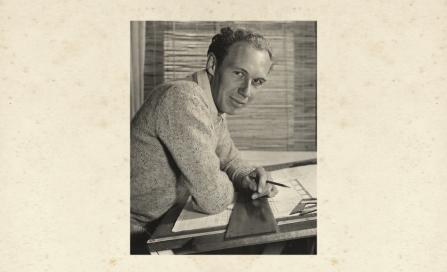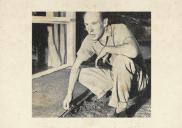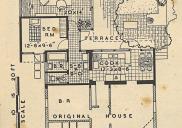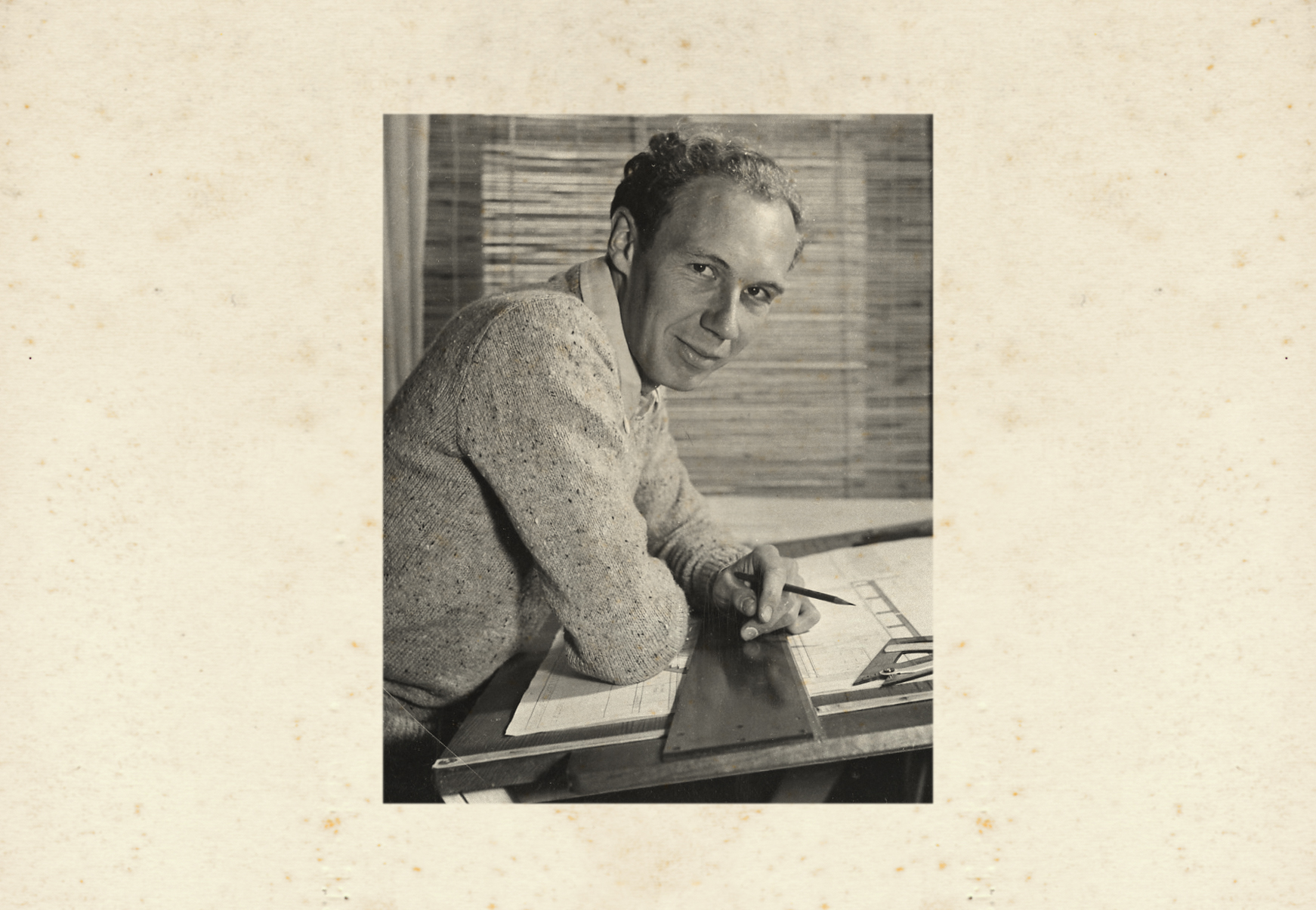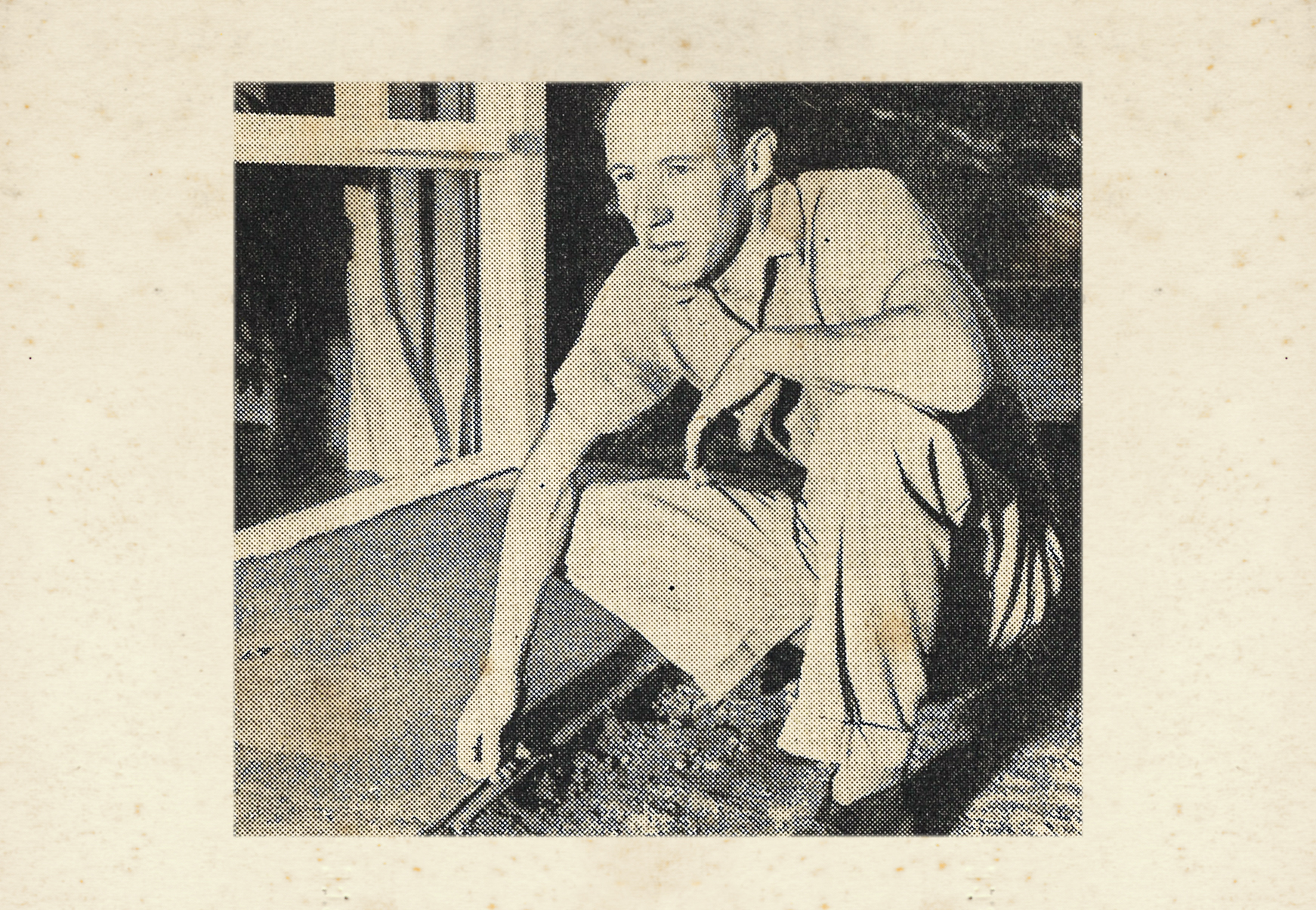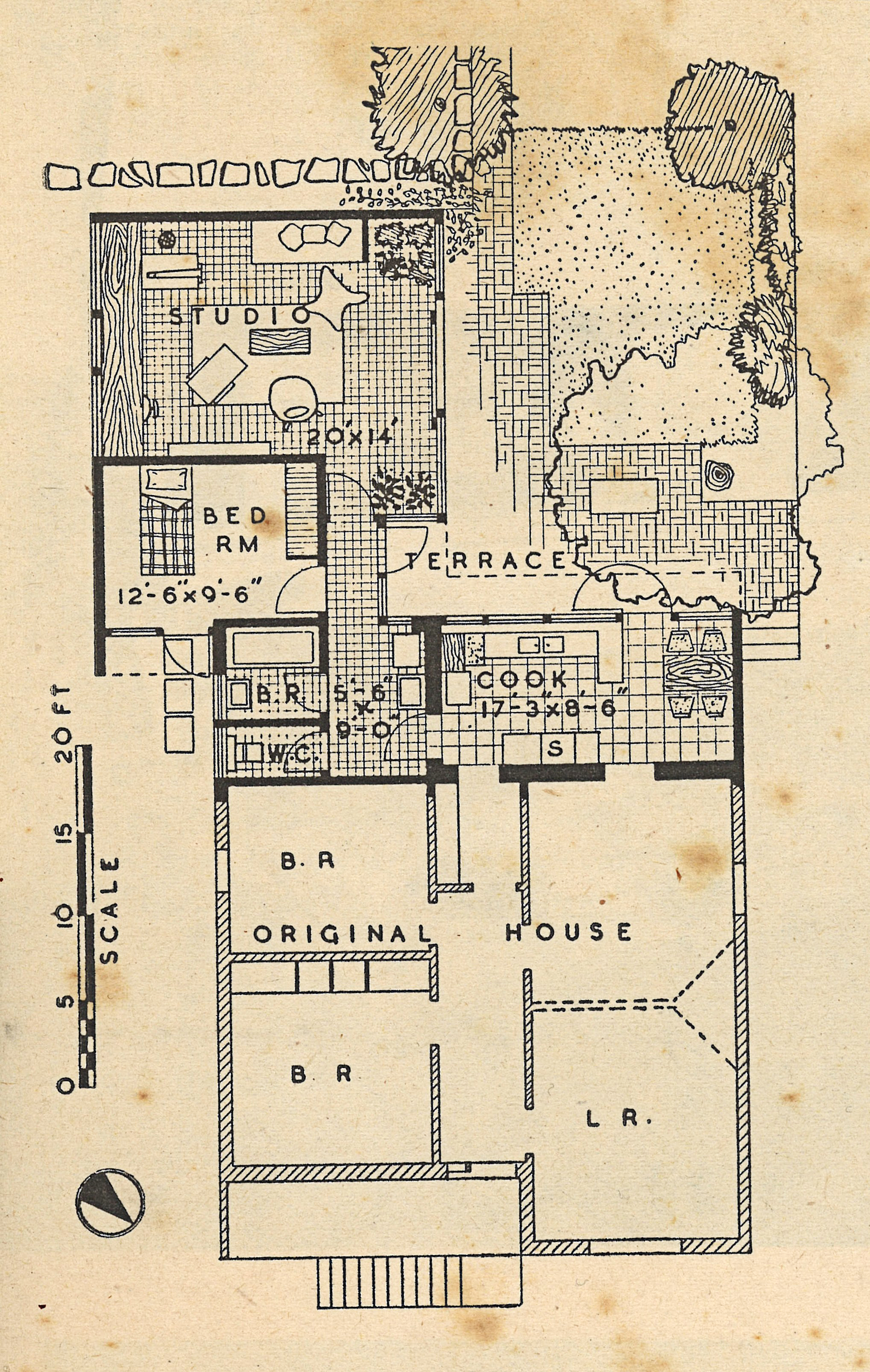|
Bryce MortlockBryce Mortlock was one of Australia’s leading Modernist architects.Born Harold Bryce Mortlock in Lithgow in 1921, he moved to Five Dock on the Parramatta River after his father died in the late 1920s. Living with his mother and grandparents, Bryce developed an interest in design and engineering by building boats which he sailed on the Parramatta River. He was also a talented artist. Ability with design, engineering and art would put him in good stead later in life. After the outbreak of World War Two in 1939 Mortlock became a flying instructor. He missed being assigned combat operations before the war ended in 1945. From 1945, Mortlock’s service qualified him for the Commonwealth Reconstruction Training Scheme (CRTS). He elected to begin an architecture course at Sydney University. The CRTS supported him for three years of the five year course. A Government study loan covered the remaining two years. Leslie Wilkinson was the head of architecture and artist Lloyd Rees taught drawing. In his third year Mortlock met one of Australia’s pioneering Modernist architects, Sydney Ancher, and secured practical experience in his office. The student intake for 1946 was a record for architecture. But of the 100 who enrolled, only 60 graduated in 1950. Mortlock topped his year and won the University Medal. With that came a travelling scholarship intended to expose young architects to study, practice and design overseas. Mortlock travelled to Europe with his wife Peggy and young son. While there he worked in the architects’ department of London County Council. When not in London he spent ‘a lot of time hunting around corners of France and Italy and so on looking for modern buildings’. Returning to Sydney late in 1950 he took up a previous offer to become a junior partner with Sydney Ancher, along with his university friend Stuart Murray. Mortlock won the prestigious Sulman Medal for the Badham House in Cronulla in 1959, an award his mentor Sydney Ancher had received in 1945. Mortlock moved with his family to Vernon Street, Cammeray, to a house built around 1917 by the speculative builders Henry Green and sons. Instead of moving on later to a vacant site to build a house of his own design, Mortlock felt committed to the place he had chosen in 1950. Consequently he altered the house ‘pulling and pushing and changing’ until, of the original house, ‘only one window remained’. By contrast, Sydney Ancher had designed himself a quintessential post-war Modernist house on an old tennis court in Neutral Bay in 1951. Bryce's son Richard Mortlock fondly recalled growing up in the much-altered house in Vernon Street. For his clients Mortlock designed houses in this International-style, which often entailed flat roofs and white interiors. Before flat rolled steel was available, bituminous felt was used for water-proofing. Later when those flat roofs began to leak, Mortlock conceded ‘preconceived aesthetic’ sometimes overruled the practicality of the technology. In 1964 Ancher, Mortlock and Murray were joined by Ken Woolley. Their office, then, was in Mount Street, North Sydney. In 1966, they moved their firm to Ridge Street. A pair of houses in 'Playfair Terrace' was gutted to create a studio. The firm became increasingly associated with a new variation of International Modernism, sometimes called the Sydney Regional School; though Mortlock shied away from the ‘invention’ of names which he saw as the work of critics not architects. This architecture softened the severity of the 1950s through the use of ‘natural’ material such as unrendered brick, exposed timber and tiles. The houses were often built in bushland settings, or at least landscaped with Australian native plants. Reflecting on his career much later, Mortlock recalled that by the mid-1960s he was beginning to consider ‘life after modern architecture’ and finding relevance in past styles, not usually a characteristic of Modernists. Mortlock’s love of the Australian landscape and its flora was apparent through his regular bush-walking, with family, in the Blue Mountains and elsewhere. From the 1970s, both he and Peggy began to weed the bushland near their Cammeray house. This entailed pulling out rampant Lantana and removing dumped rubbish. In doing so they pioneered the Bushcare movement in North Sydney, an initiative now run by North Sydney Council. Bryce Mortlock received an honorary Doctorate in Architecture from the University of Melbourne in 1983. He died in 2004. His contribution to North Sydney was commemorated by the naming of Bryce Mortlock Reserve – an area of bushland near his Cammeray home. In an obituary which appeared in the Sydney Morning Herald on 7 August 2004, Ken Woolley recalled his first encounter with Mortlock: 'In 1957 Bryce was a founding member of the Architectural Society, where I first met him. While it was a mixed bag of young progressive architects, its attraction was as a place of discourse, ideal for intellectual analysis of a range of concerns from aesthetics to specifications. Those early years had a great spirit, typical of the '60s - liberal and humanist attitudes, a great period of design, the advent of the Sydney School and involvement in the worldwide movement of the now misunderstood New Brutalism, which was really a somewhat ironic term for frankness in design'.
Audio: Listen to Bryce Mortlock reflect upon his career with oral historian Nan Manefield in 2000. Merle Coppell Oral History Collection, OH254
|
|

